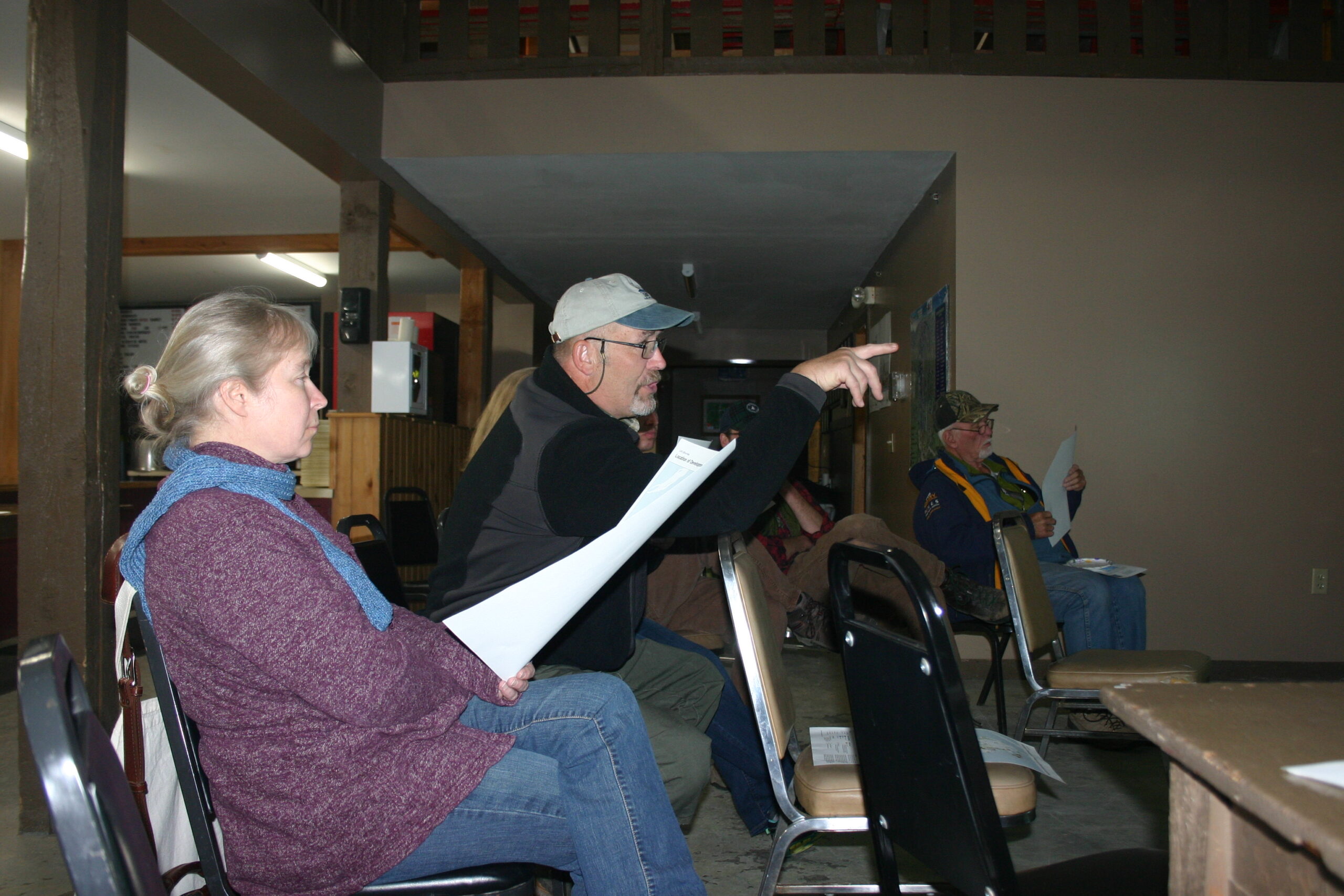
MARS HILL, Maine — Several individuals expressed concerns about a new proposal that could lead to more commercial development in unorganized territories of Aroostook and the state during a public informational meeting held at the Bigrock Ski Lodge on June 14.
The Land Use Planning Commission has proposed zoning changes that would allow new subdivision or commercial development in Maine’s 1.8 millions acres of Unorganized Territory. Under the proposal, development could occur within 10 linear miles of designated “rural hub” communities, but not on land already protected by conservation restrictions.
Under the commission’s current one-mile adjacency rule, any new development in unorganized townships has to be within one road mile of existing similar development, such as a cluster of camps or an existing business.
Thursday’s meeting in Mars Hill was organized by the Natural Resources Council of Maine, which is based in Augusta and opposes the LUPC’s proposed policy.
Carly Peruccio, forest and wildlife outreach coordinator for NRCM, said at the meeting that people she has met with from many communities, such as Patten and Millinocket, are concerned that allowing commercial development further from town lines would discourage businesses and families from settling in the already established communities.
“In Millinocket, people mentioned that if a subdivision were to be built 10 miles from town, they would have to find a way to get those children to school and it would be a greater burden on their fire or police departments,” Peruccio said. “They would rather have development occur within their own communities and give people more incentives to live and do business there.”
Peruccio said that NRCM representatives have spoken to LUPC officials, who have argued that the “one-mile” rule can result in a “leapfrogging” effect in which the development can lead to more development happening one mile or less down the road without considering how close they are to existing “rural hubs.” LUPC believes that the current policy doesn’t provide a clear definition of how suitable commercial development would be for certain proposed areas.
But the NRCM has argued that the current policy, which has been in place for 40 years, has protected forests and lakes in Maine’s unorganized territories and prevented urban sprawling and strip development in scenic areas such as sections of Route 11 in Aroostook County.
LUPC’s proposed policy indicates that any land less than two miles from a public road and less than 10 aerial miles from rural hub that provides public services would be considered “primary locations” for subdivision or commercial development. Land that is outside of primary locations but located within five miles of a public road would be considered “secondary locations” for potential development.
Mike Maynard, a resident of Perham, said he didn’t understand the motivations for LUPC’s proposed policy and asked Peruccio if she knew of specific plans for development in any of Maine’s Unorganized Territory.
“We have asked LUPC about their motivations, but unfortunately they have not revealed who they have spoken to or if they’ve had conversations with anyone in regards to land development,” Peruccio said.
“I would like to find out what their intentions are and why all this unspoiled wilderness is suddenly marked for development,” Maynard said.
Sharri Venno of Houlton noted that she had only recently found out about LUPC’s proposal and expressed disappointment in learning that the commission is not required to go through the state Legislature to change its policies.
“If LUPC makes decisions without the Legislature and without us knowing about their policies, how could we have a voice?” said Venno, who is the environmental planner for the Houlton Band of Maliseet Indians.
Peruccio explained that LUPC released a conceptual plan for policy changes in February but did not release the full version of its proposal until the end of May. The NRCM has been frustrated with how quickly the commission has brought forth the proposed policy changes and with how LUPC has only scheduled one public hearing, leaving people with little chance to express opinions and concerns.
That hearing will be held on Wednesday, June 20, at Jeff’s Catering at 15 Littlefield Way in Brewer at 1 p.m.
On its website, LUPC states that a 2017 survey of “people who live, work, own property, and/or recreate” in Maine’s unorganized territory had generated over 2,000 responses, but does not offer many details on the nature of the responses. The commision states on the site, “It was clear that people value the natural resources and quality of life in rural Maine.”
The commission then invites the public to submit written comments to LUPC Planner Benjamin Godsoe at benjamin.godsoe@maine.gov or mail comments to Land Use Planning Commission, C/O Ben Godsoe, 18 Elkins Lane, 22 State House Station, Augusta, ME, 04333.
Peruccio told people in attendance during Thursday’s meeting that LUPC would likely deliberate on the proposed policy changes in October and vote in November. She encouraged everyone to submit written comments to LUPC officials by the end of the summer and to view NRCM’s comments about the proposal on its website. The site also provides a statewide map of primary and secondary locations of potential land development.
She was not aware of any scheduled public hearings other than the June 20 event.
Bangor Daily News reporter Bill Trotter contributed to this report.







